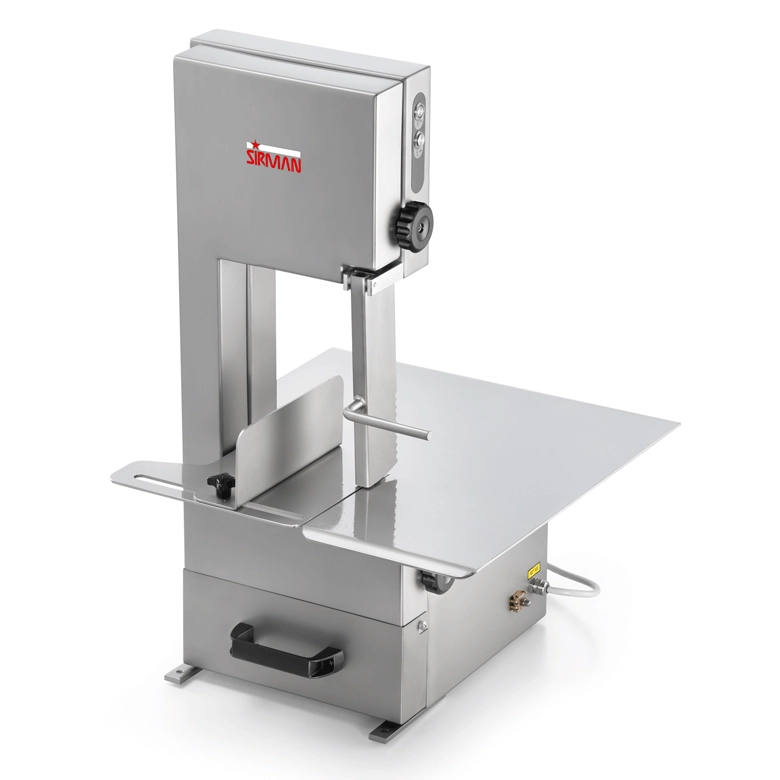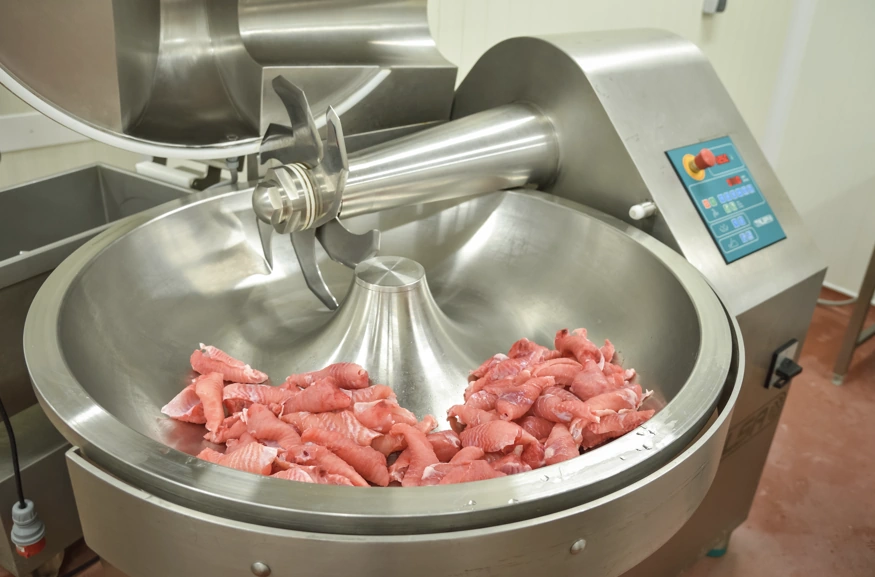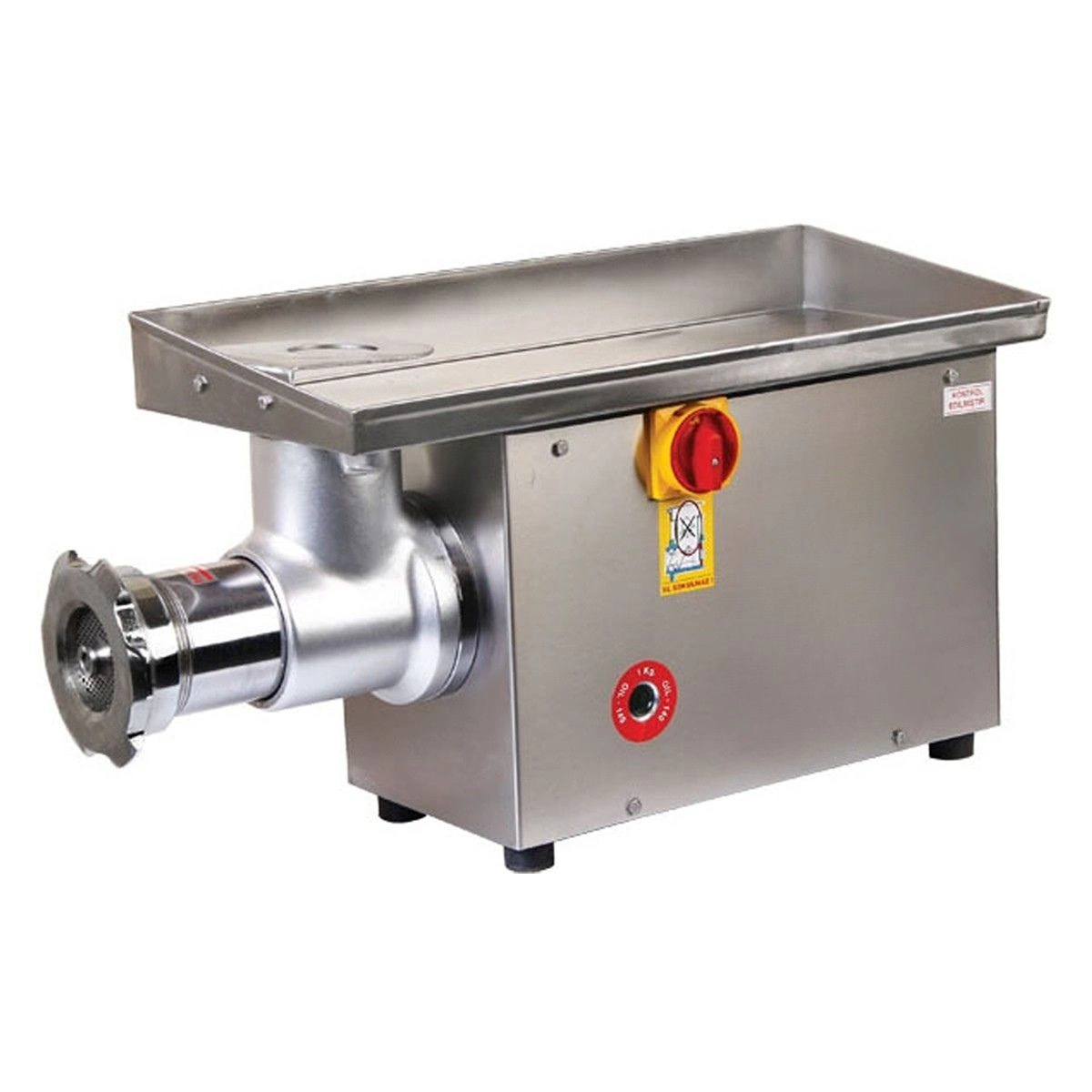
- Home
- Meat Choppers – Turkey-Built High-Speed Solutions for Catering & Industrial Kitchens
Food Preparation Units Made in Turkey
Meat Choppers – Turkey-Built High-Speed Solutions for Catering & Industrial Kitchens
Why Meat Choppers Are a Game-Changer in Foodservice
In a Casablanca catering hub, staff once spent hours cutting meat manually for stews and kebabs. Output was slow, texture uneven, and hygiene audits didn’t pass smoothly. We seen the same in Amman hotel kitchens and Frankfurt central facilities, where manual chopping simply could not match the volume. Commercial meat choppers bring consistency, speed, and HACCP-compliant workflow to modern kitchens.
For consultants and procurement managers, meat choppers are often highlighted in BOQs for hotels, catering hubs, and commissaries. Contractors integrate them to secure project timelines, ensure compliance, and guarantee smooth handover. Turkey-built solutions are valued for their durability, cutting power, and export-ready reliability.
In commissary kitchens across Southeast Asia and institutional setups in North Africa, manual chopping creates bottlenecks during peak hours. By installing meat choppers, chefs reduce strain on staff, accelerate prep time, and improve overall food cost control. This third pillar proves why modern projects depend on automated solutions.
1-Year Factory Warranty
Service in 90+ countries
Spare parts in Turkey, UAE
Technical Overview – Meat Chopper Model
Capacity (kg/hr) | Bowl Volume (L) | Blades | Motor Power (W) | Voltage (V) | Dimensions (mm) | Weight (kg) |
900 | 60 | 6 | 5000 | 380 | 1200 × 1300 × 1500 | 400 |
Installation & Workflow Integration
Designed for smooth installation and operator ease.
- Plug-and-play operation on three-phase power
- Compact design fits into catering hubs and hotel prep areas
- Training staff takes less than 20 minutes
- Adapts into commissary lines, industrial kitchens, and resort catering
Durability & Build Quality
Built for continuous operation and long lifecycle.
- AISI 304 stainless steel housing
- Heavy-duty motor tested for 24/7 duty cycles
- Reinforced blades withstand thousands of chopping hours
- Built to last in demanding institutional kitchens
Hygiene & Cleaning
Food safety is critical in chopping lines.
- Removable bowl and blades for quick cleaning
- Smooth stainless surfaces, no hidden gaps
- HACCP-compliant design validated in Amman catering kitchens
- Dishwasher-safe accessories for easy sanitation
ROI & Cost Savings
Meat choppers reduce labor costs and improve efficiency.
- Replace 2–3 staff per shift in bulk prep
- Save 180+ labor hours/month in hotels and catering hubs
- Reduce trimming waste by 12%
- ROI achieved in under 10 months

🔄 Comparison Guide – Manual vs Automatic Meat Chopping
Aspect | Manual Chopping | Commercial Meat Chopper |
Capacity | 50–100 kg/day, depends on staff | Up to 900 kg/hr with consistent output |
Consistency | Uneven cuts, texture varies | Uniform texture for sausages, kebabs, patties |
Labor | 3–4 staff needed for bulk prep | 1 operator can manage high-volume production |
Hygiene | Higher contamination risk | HACCP-compliant, easy-clean stainless design |
ROI | No clear ROI, high payroll cost | Payback in under 10 months, lower waste & labor |
Best Use | Small kitchens with limited prep | Hotels, catering hubs, commissaries, institutions |

📐 Ergonomic Design & Operator Safety
Operator comfort and safety are vital during long hours of chopping. In large catering hubs and commissaries, workers often stand for extended shifts, making ergonomics crucial for both productivity and health.
- Adjustable working height and cutting bowl design allow customization for different staff members
- Vibration-reducing construction stabilizes the machine, preventing hand-arm fatigue
- Extended operation without overstraining staff, even in 10–12 hour shifts
- Reduces fatigue and risk of repetitive strain injuries, lowering HR costs and sick days
- CE and HACCP safety compliance validated by institutional audits in Europe and Asia
High-Speed Chopping for Sausages & Kebabs
Uniform texture is essential for processed meat products.
- Consistent grind for sausages, kebabs, and patties
- High-speed chopping ensures even fat distribution
- Improves final product quality in Mediterranean and Middle Eastern menus
Cold Chain Integration for Choppers
Meat choppers must maintain food safety when operating in chilled environments.
- Designed for use in cold rooms and butcher zones
- Maintains meat temperature below HACCP limits
- Prevents bacterial growth during long production shifts
- Validated in North African and Gulf catering projects
Where Meat Choppers Work Best
Meat choppers adapt to a wide range of foodservice operations worldwide.
- Hotels & Resorts – banquets and buffets in Amman and Casablanca, serving 400+ guests daily
- Restaurants – kebab and shawarma prep in Istanbul and Frankfurt, ensuring consistent textures
- Catering & Central Kitchens – large-batch chopping in Nairobi and Manila, supporting 1,000+ meals per day
- Institutions – schools, hospitals, and commissaries in Paris and Kuala Lumpur, meeting strict HACCP standards
- Food Production Facilities – industrial-scale operations in North Africa and Southeast Asia, requiring high-speed chopping for volume efficiency
Energy Efficiency in High-Speed Choppers
Energy costs are critical in central kitchens and food factories.
- Modern motors deliver 10–15% power savings
- Built for 24/7 continuous duty cycles without overheating
- Reduces long-term operating costs for large-scale production
Regional Menu Applications
Meat choppers adapt to diverse global cuisines, ensuring chefs can deliver authentic textures across varied dishes. This flexibility is critical for international hotels and catering projects serving multi-ethnic menus.
- Kebabs and köfte in Middle Eastern kitchens, ensuring traditional consistency
- Dumpling, hotpot, and baozi fillings in Asian foodservice, where uniform mince is essential
- Meat fillings for sausages and charcuterie in European commissaries
- Minced bases for tacos and empanadas in Latin American catering hubs
- Consistent texture across regional dishes improves guest satisfaction scores and menu reliability
Case Study – Frankfurt Central Kitchen
A Frankfurt central kitchen preparing 2,000 meals/day struggled with manual chopping. Staff rotated shifts, output was inconsistent, and hygiene audits repeatedly flagged high-risk points. After adopting Turkey-built choppers, workflow improved drastically.
- Prep time reduced by 70%, saving several hours per shift
- Staff redeployed to cooking and plating tasks, boosting efficiency across the kitchen
- Hygiene audits scored 99% compliance, eliminating recurring food safety issues
- ROI achieved in 9 months, supported by both labor and food cost savings
- Guest satisfaction scores increased by 15% as meals became more consistent
- Project managers reported smoother BOQ handovers with consultant teams
Export & Logistics
Turkey-built meat choppers are shipped globally with full export support.
- CE, ISO, and SGS certificates included in every shipment
- Export handled from Istanbul with Incoterms FOB, CIF, EXW
- Container loading plans optimized for safe transport
- Customs clearance and HS code documentation managed by our team
❓ FAQ – Meat Choppers in Projects
1. What is the typical hourly capacity?
Up to 900 kg/hr.
2. How many blades do choppers use?
Commercial units typically use 6 reinforced blades.
3. Are they HACCP compliant?
Yes, stainless design ensures full compliance.
4. Can new staff use it quickly?
Yes, training takes less than 20 minutes.
5. What warranty is offered?
Two-year international warranty with spare parts support.
Real Projects & Testimonials – What Our Partners Say

